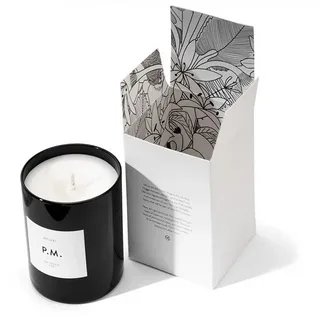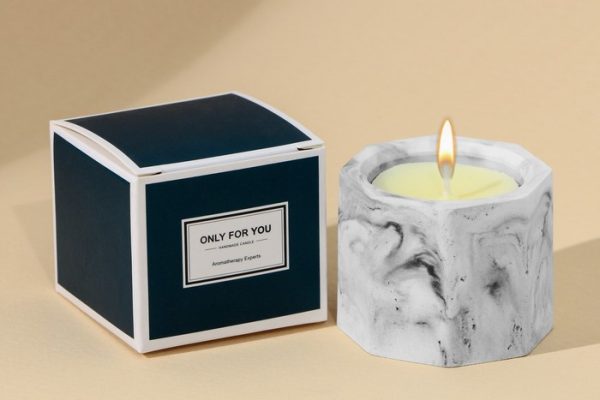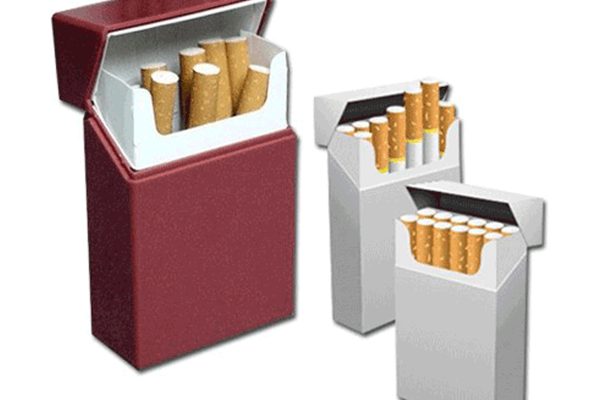Creating packaging for candles isn’t just about looks—it involves a series of detailed cost decisions. Every step, from materials to printing, can affect the final price. Businesses need to understand these elements to manage their budgets and make smarter packaging choices. In this guide, we’ll explore the key cost factors involved in producing custom boxes for candles. Each section below will break down a specific element that adds to the overall production cost.
Material Selection and Its Cost Impact
One of the biggest influences on cost is the material used for the box. There are many materials available, but they vary in strength, appearance, and price. Cardboard is the most common choice, but even within cardboard, there are several types such as Kraft, corrugated, and cardstock. Each type offers different benefits.
Kraft is eco-friendly and less expensive but has a rustic look. Corrugated cardboard is strong and durable, ideal for shipping. Cardstock gives a premium finish and is often used for retail display. Choosing the right material depends on the product’s weight, branding needs, and whether the box will be used for shipping or display.
Another thing to consider is thickness. Thicker materials offer better protection but add to the cost. Also, sourcing sustainable or recycled materials can sometimes cost more due to their special processing.
In addition, the availability of materials can shift costs. During high-demand seasons or due to supply chain disruptions, material prices can rise. Businesses need to keep an eye on these market changes. Choosing local suppliers can also affect material costs by reducing shipping expenses.
Box Size and Shape Customization
The size and shape of the box can increase or decrease the cost in big ways. Standard box shapes are cheaper because they fit existing manufacturing templates. However, unique shapes require special die cuts. Creating these custom tools means an added one-time fee.
Bigger boxes use more material and result in higher shipping costs. Odd shapes might look attractive but can be hard to stack or pack, leading to increased handling or shipping charges. Brands must balance visual appeal with functionality.
The internal dimensions also matter. If a candle needs extra padding or has a unique design, the box might need inserts or double walls. These additions use more material and labor, increasing the price.
Some candle businesses go for minimalist candle packaging box to reduce costs. Others aim for luxury experiences, choosing detailed shapes and extra components. These design choices can impact manufacturing time, production rates, and waste—all factors that add up in the end.
Printing Techniques and Finishing Effects
Printing is where much of the branding comes alive. But each printing technique has its own cost structure. Digital printing is fast and good for small runs. It’s also flexible, allowing quick changes in designs. However, it’s more expensive per unit for large volumes.
Offset printing becomes cheaper when printing in bulk. But it requires setup costs, making it less ideal for small batches. Brands should consider how many boxes they need before choosing a method.
The number of colors used also matters. More colors require more ink and setup, increasing costs. Special finishes such as foil stamping, embossing, spot UV, or matte/gloss coatings are great for luxury branding but come with higher prices.
Even the type of ink—soy-based, water-based, or metallic—can affect the price. Eco-friendly inks, while better for the environment, are usually costlier.
Order Quantity and Bulk Pricing Advantages
One major pricing factor is how many boxes you order. Most manufacturers offer better rates for higher quantities. This is because the setup cost for machines and labor is spread across more units. It means the cost per box goes down as the order size increases.
Ordering small quantities leads to higher prices per unit. It also means more frequent reordering, which can lead to delays. But for new or small businesses, ordering in bulk might tie up too much capital.
Another advantage of bulk orders is consistency. With a large batch, you ensure color, size, and print quality stay uniform. Repeat orders may show slight variations if made at different times or suppliers.
However, bulk orders come with storage costs. Businesses need space to keep boxes. If they don’t have the storage, they might end up paying extra to keep them at a warehouse.
Planning your order wisely can help avoid both overstocking and underordering. Businesses should analyze their sales cycle and plan box orders accordingly for better cost management.
Labor and Manufacturing Time
Labor costs can vary based on how complex the packaging design is. Simple boxes are quicker to assemble and pack. But if the design includes inserts, windows, or special closures, it needs more hands or time. This adds to labor expenses.
Some candle businesses choose hand-assembled boxes for a personalized touch. While this looks great, it’s slower and costlier than machine-assembled packaging.
Manufacturing time also plays a role in pricing. Rush orders can increase costs by requiring overtime or disrupting normal schedules. Most box suppliers charge a premium for urgent jobs.
Another point to consider is the factory location. Manufacturing in areas with high labor costs will increase the overall price. Outsourcing to regions with cheaper labor might save money but could impact quality or lead to delays in delivery.
Shipping and Logistics Costs
Shipping is often a hidden cost that many businesses underestimate. Packaging materials, even if light, take up space. A large or awkwardly shaped box can increase shipping rates due to volume-based pricing.
The distance from the manufacturer to your warehouse matters too. Local suppliers can offer lower shipping costs and faster delivery times. International suppliers might offer cheaper unit prices but high freight charges and longer transit.
Fuel prices, taxes, and import duties also influence logistics costs. In some cases, you might face unexpected charges like customs clearance fees.
Another factor is packaging for the packaging. Boxes need to be shipped safely to avoid damage. This may involve using pallets, wraps, and extra outer boxes. These protective layers add to cost and weight.
To reduce these costs, many companies work with third-party logistics providers. They help optimize routes and packaging methods. Choosing flat-packed boxes instead of pre-assembled ones can also save space and reduce shipping fees.
Sustainability Choices and Environmental Costs
More consumers today care about sustainability. This shift has encouraged many businesses to opt for eco-friendly packaging. But green choices can sometimes raise costs.
Recycled materials, soy-based inks, and biodegradable finishes are all great for the planet. Yet they may come at a higher price than conventional materials. The reason is the processing and sourcing involved in making these items more earth-friendly.
Also, sustainable packaging often requires certification, like FSC approval. This certification proves that materials come from responsibly managed forests. Getting and using such certifications adds to the production cost.
However, this cost can be seen as an investment. Brands that support sustainability often earn more customer loyalty. It can also serve as a strong marketing tool. Some even offset the extra cost by charging a little more or reducing other expenses.
Custom Inserts, Windows, and Add-ons
Some packaging requires more than just a basic box. To secure candles inside, many brands use inserts made from foam, cardboard, or molded pulp. These provide stability but increase material and labor costs.
Clear windows made from PVC or biodegradable plastic let customers see the product. They look great but require precision cutting and extra material, making them costly.
Magnets, ribbons, handles, or multi-box units also add to production time and cost. These features create a better customer experience but need careful consideration. Some luxury brands include compartments or special locking systems in their boxes.
These extras can also affect how the boxes are stored and shipped. More complex packaging often takes up more space or needs better protection during transit.
Conclusion
A successful candle business understands that packaging is more than just protection. It’s a marketing tool, a brand statement, and an important cost center. By knowing the various factors involved—from materials and printing to design and delivery—brands can make informed decisions. This helps balance cost with quality while keeping the packaging attractive and effective. Whether aiming for a premium look or a sustainable solution, every detail contributes to the total cost of producing a candle packaging box.








